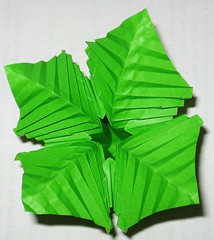Some people think "drill is kill", and many people think it's necessary.
And of those that use it, not everyone knows HOW to actually drill math facts effectively.
You know, this is NOT the most effective way:
Shuffle the flash cards and start asking randomly.
Why? Because you are not utilizing techniques that help our brain remember quicker.
For example, it is easier to remember when the mind can tie the fact into something already known.
This is the idea behind silly rhymes such as "five, six, seven, eight - fifty-six is seven times eight."
Besides those, we want to show our children the PATTERNS in math.
So this is how I start drilling math facts (whether addition or multiplication):
I make a list on paper, IN ORDER. For example, lately we've been doing this with my daughter:
8 + 2
8 + 3
8 + 4
8 + 5
8 + 6
8 + 7
8 + 8
8 + 9
We went through the answers and notice how each one is ONE MORE than the next! That's a pattern!
Then I would point to a fact and say the problem so she'd both see and hear it (using two senses). You can additionally MOVE her finger on the chart with yours - so she's using three senses. This should help the auditory, visual, and kinesthetic learners all.
When I'd point to a fact further down the list, automatically she'd know it's more than a fact that is up on the list. It's a visual pattern.
First, I drilled just a few of them, namely 8 + 3, 8 + 5, and 8 + 8 until she remembered those.
After that, I would go first to 8 + 8 which she knew, and immediately after that to 8 + 9, and she was able to deduce it from knowing 8 + 8.
I would gradually add new facts in a similar manner - using the known facts as "stepping stones" so that the new fact was one more or less than a well-known fact.
And so we go "round and round" on this chart.
NOTICE THIS:
= > The chart creates an organized context for the addition facts.Obviously, the child is also associating the position of the fact on the chart with the answer, and so after this is well remembered, it will still take another effort to remember the facts when they're in isolated context, such as in a game, or in a math book, or on flash cards.
But at least it is a very good start, I feel!
What are your thoughts?
















































